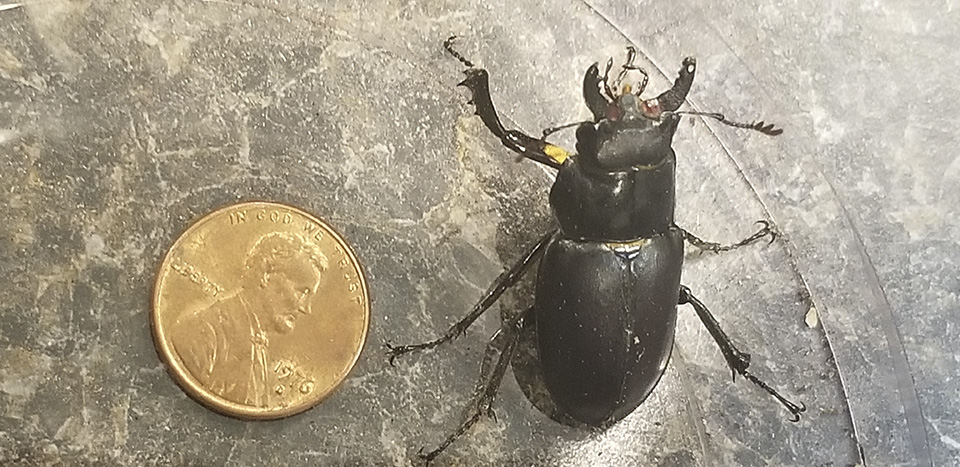
Reddish-brown stag beetle (Lucanus capreolus) is relatively large beetle. It occurs in the United States east of the Great Plains and in adjacent Canadian provinces. It is found around decaying logs and stumps in deciduous forests, parks, and neighborhoods with trees. Larvae feed on decaying wood, adults feed on tree sap. The name “stag beetle” refers to the oversized mandibles on some males that resemble deer antlers. Another common name for this beetle is pinching bug. The mandibles look fierce and are used to fight other males over a female. When confronted, it will rear back threateningly with its mandibles open. However, when handled by humans, it can give no more than a mild pinch.
Adults are reddish-brown and up to 1½″ long, not including the mandibles. The antennae have 10 segments, are abruptly bent, and are expanded (clubbed) at the tip. The body appears smooth but is densely covered with very fine punctures. The third and largest segment of each leg is distinctly pale.
http://www.minnesotaseasons.com/Insects/reddish-brown_stag_beetle.html

